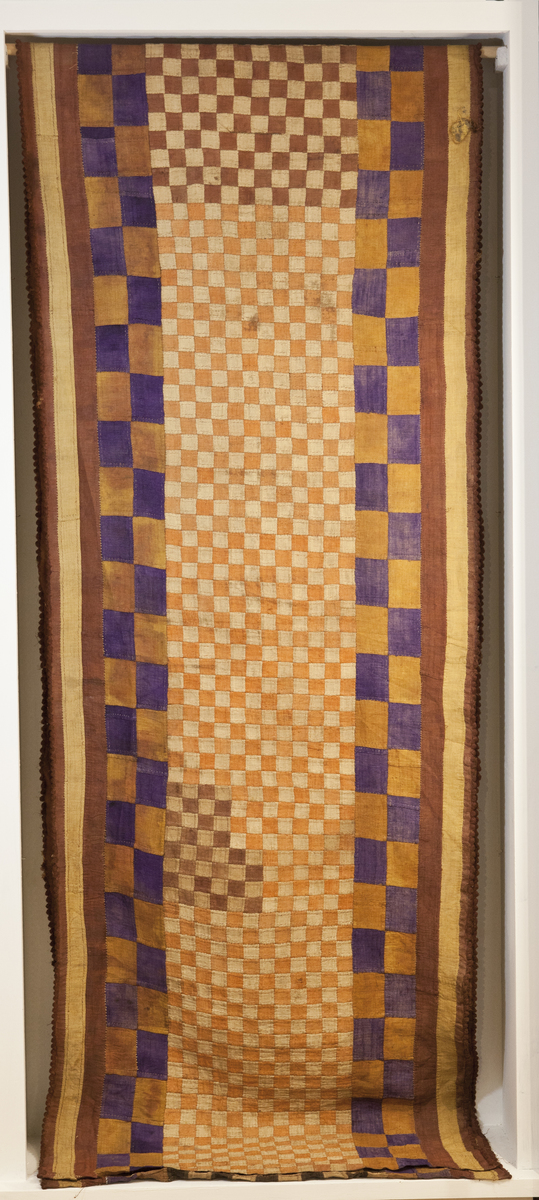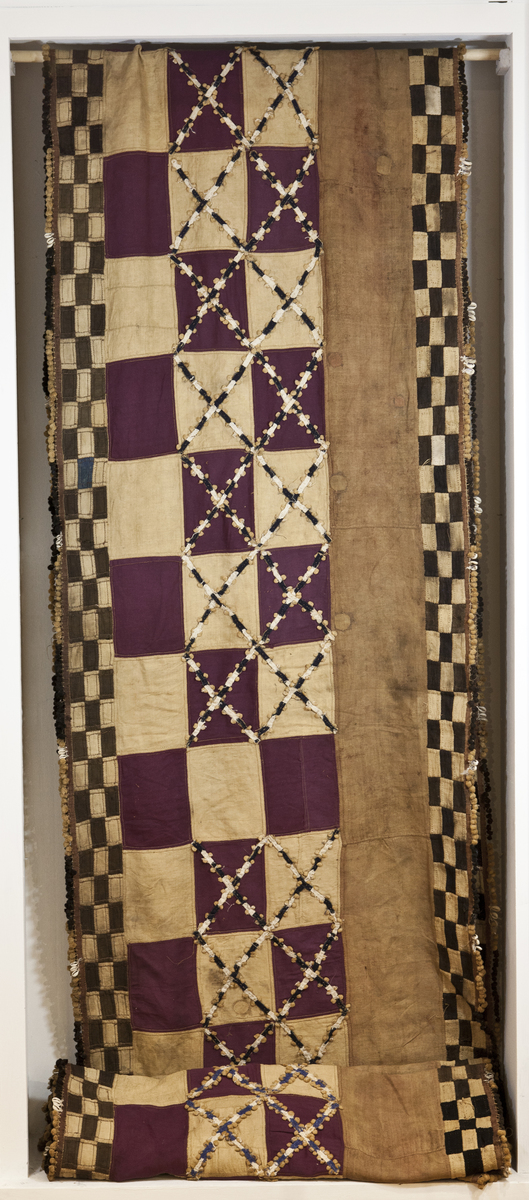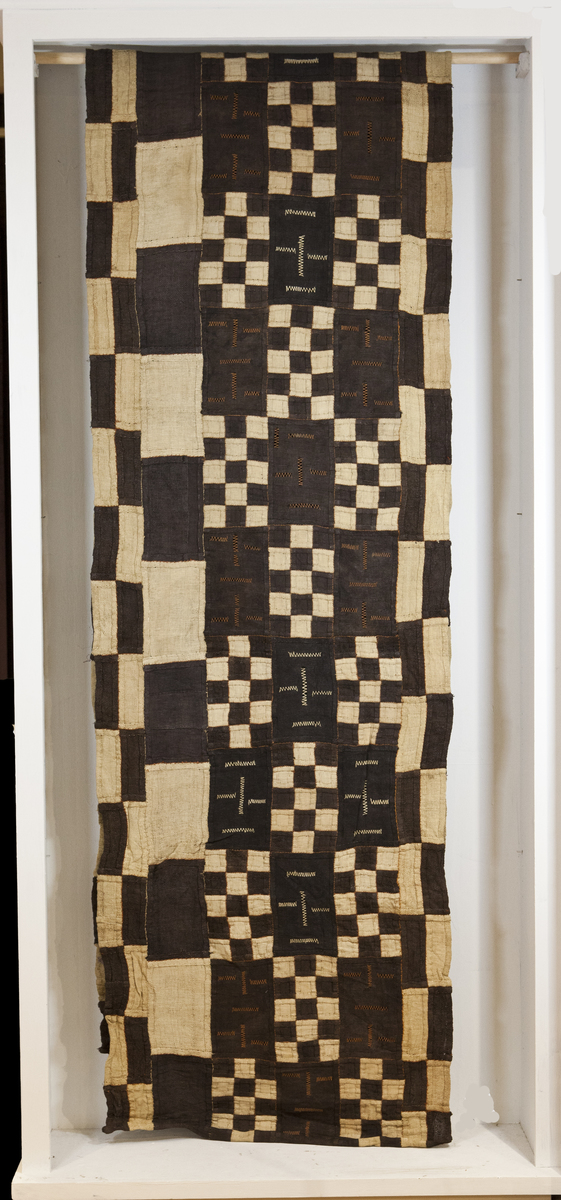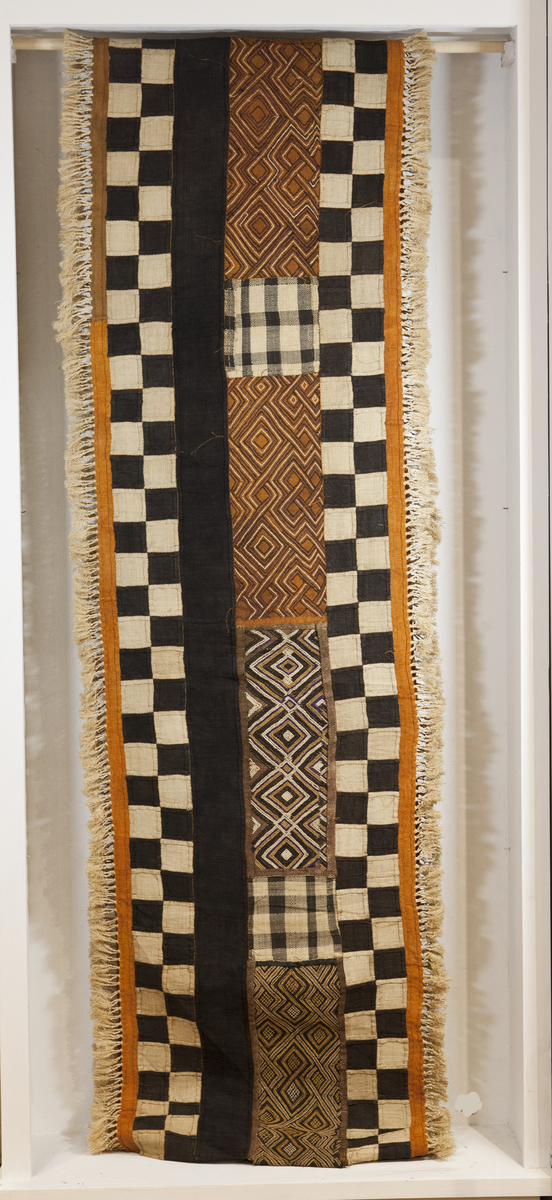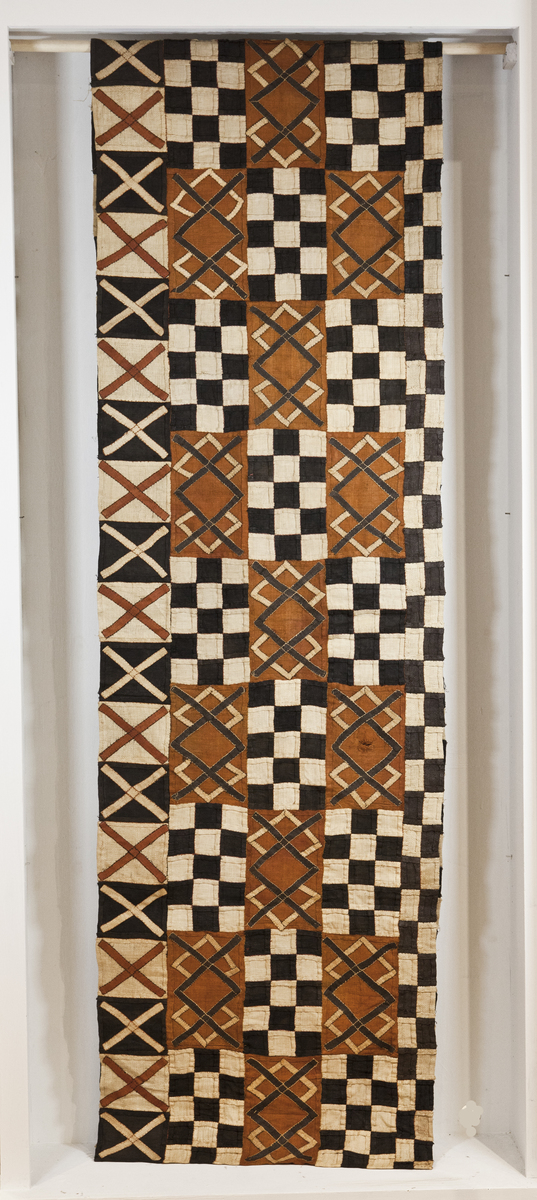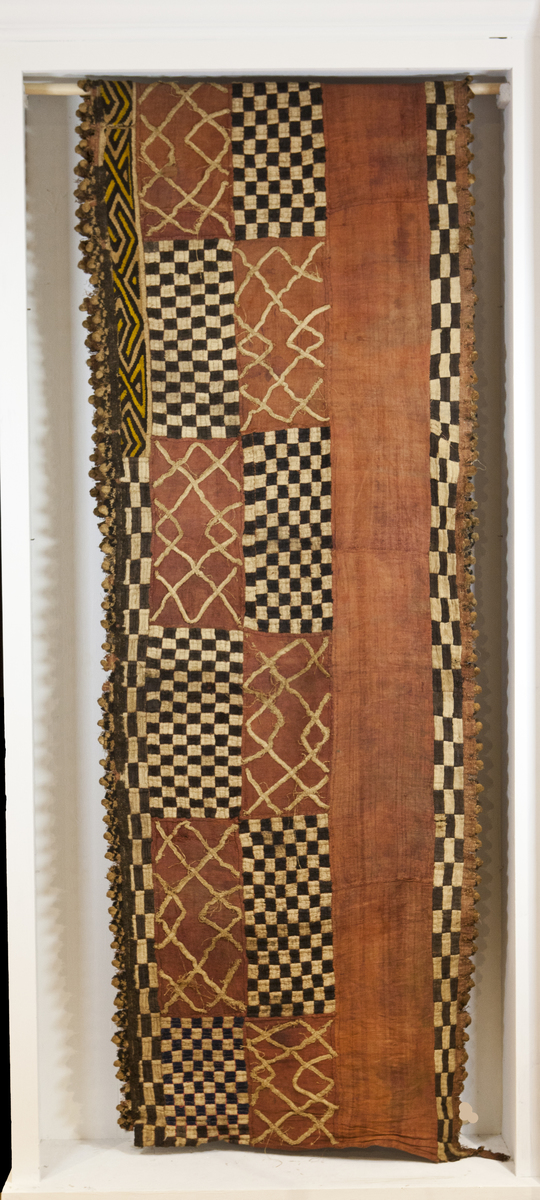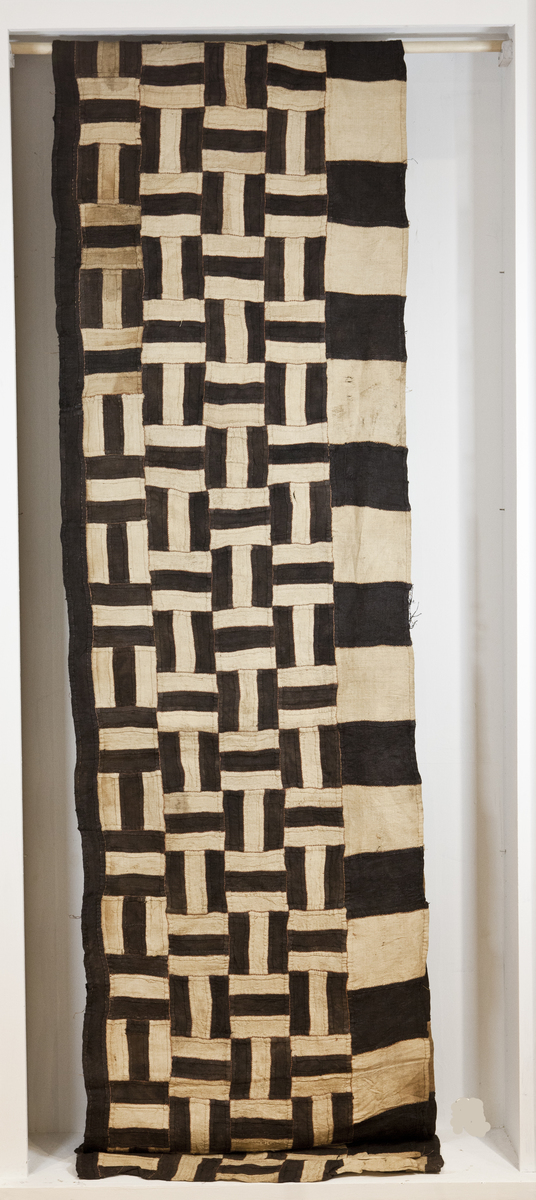Description
The “Nchakabwiin” skirt is an important part of the cultural heritage of the Bakuba people of Central Africa. The Bakuba are a Bantu ethnic group that is concentrated in the Kasai region of the Democratic Republic of the Congo.
The skirt has a long history that is rooted in the Bakuba’s cultural traditions. Historically, the Bakuba were known for their textile arts, particularly the creation of raffia cloths, which were used as currency and traded throughout the region. The “Nchakabwiin” skirt emerged as a form of artistic expression that combined the Bakuba’s expertise in textile production with their creative vision.
The skirt’s unique design and composition reflect the Bakuba’s artistic sensibility and cultural values. The alternating black and red dyes used in the panels symbolize the Bakuba’s cosmology, which is based on the interplay between light and darkness. The arrangement of the panels also reflects the Bakuba’s belief in the interconnectedness of all things, as the different panels are brought together to create a unified whole.
The skirt is composed of square or rectangular fabrics that are stitched together lengthwise, creating a unified panel. The panels are made from different fabrics and are arranged in a way that highlights their lateral motion.
The motion is established by alternating the dyes of black and red, or by combining panels of different dimensions. This creates an interesting visual effect that draws the eye along the length of the skirt.
One of the unique aspects of the “Nchakabwiin” skirt is that the patterns are not arranged in any specific order. Instead, they illustrate their mutual relationship along the diagonals. This creates a sense of unity and coherence despite the seemingly random arrangement of the panels.
Beyond its aesthetic and symbolic significance, the “Nchakabwiin” skirt is also an important marker of social status and identity. The skirt is traditionally worn by women during important ceremonies and festivals, such as weddings and funerals. The skirt’s design and motifs can indicate the wearer’s age, social status, and clan affiliation. In this way, the “Nchakabwiin” skirt is not just a beautiful piece of art but also a tangible expression of the Bakuba’s cultural identity and heritage.
In conclusion, the “Nchakabwiin” skirt is a rich and multifaceted artifact that embodies the creativity, symbolism, and cultural significance of the Bakuba people. Its history and cultural importance make it a valuable object of study and appreciation for scholars and art enthusiasts alike.


